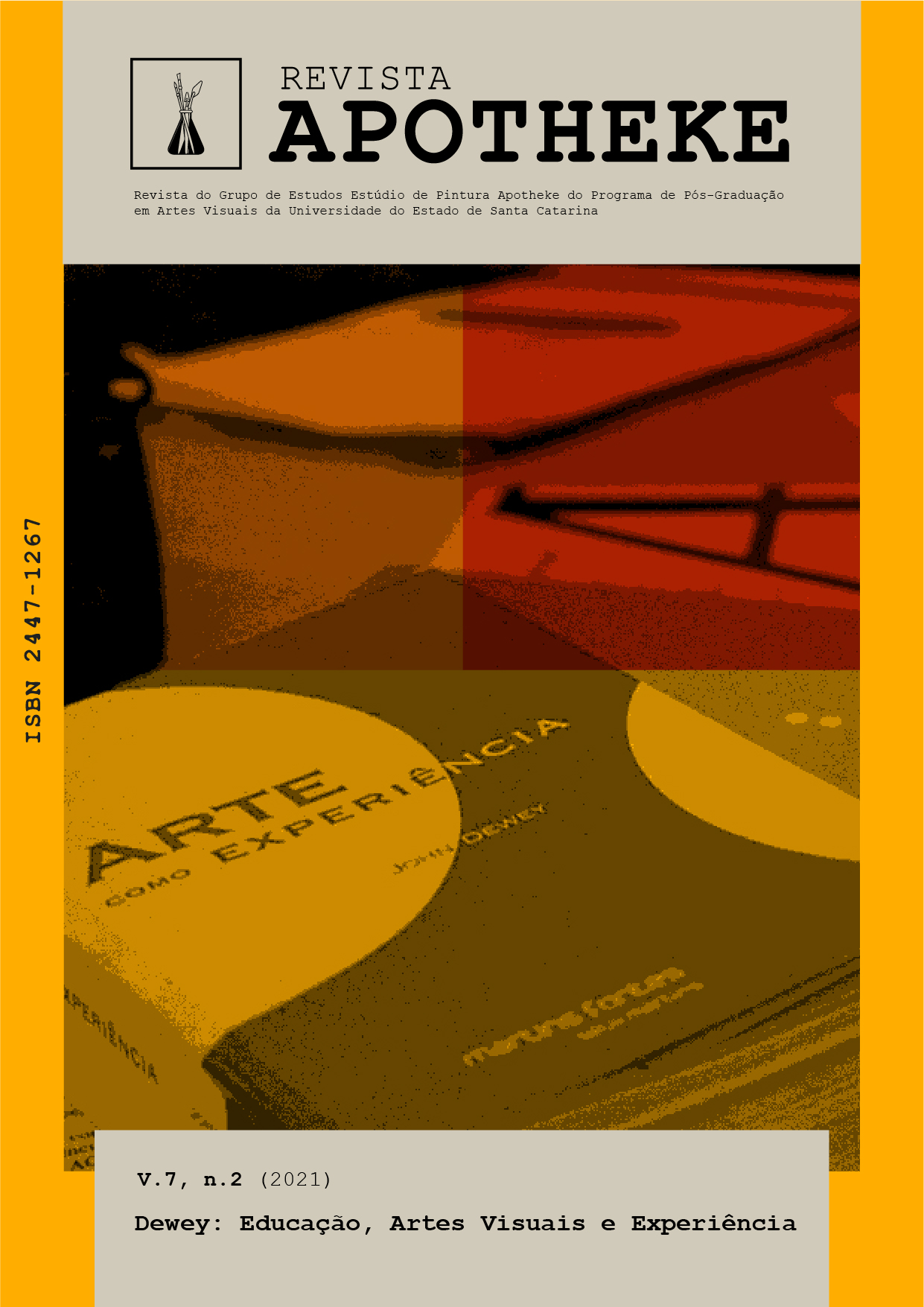Matisse, "The Moroccans": vendo por si mesmo
DOI:
https://doi.org/10.5965/24471267722021365Palavras-chave:
Museus, Abstração, Artista do Ensino, MatisseResumo
Um pintor e artista autônomo de Nova York descreve uma experiência ao visitar a pintura de Matisse "Os Marroquinos" no Museu de Arte Moderna com um grupo de jovens e suas famílias. Ela descreve seus métodos de educação estética, que incluem encorajar os visitantes do museu a se envolverem profundamente com as obras de arte, observando, fazendo perguntas e participando de discussões em grupo. Quando as conclusões dos visitantes sobre "Os marroquinos" se revelam conflitantes com o texto da parede do museu, eles questionam no que deveriam acreditar - em seus próprios olhos ou na interpretação oficial do museu sobre esta obra abstrata. Conectando essa experiência à escrita de John Dewey sobre o propósito da arte e o poder do observador para ativar um objeto de arte, o autor reflete sobre o papel dos museus e as prioridades às vezes conflitantes de engajamento público e autoridade acadêmica.
Downloads
Referências
Cowart et al. Matisse in Morocco: The Paintings and Drawings, 1912-1913. First Edition. Washington, DC: National Gallery of Art, 1990.
Higgins. Matisse’s Search For Light Illuminated by MoMA Show. The Morning Call. 22 July, 1990. Available at: https://www.mcall.com/news/mc-xpm-1990-07-22-2761061-story.html. Accessed in 18 July 2021.
Richard. ‘Matisse in Morocco’ Dreaming in Color. The Washington Post. 18 March, 1990. Available at: https://www.washingtonpost.com/archive/lifestyle/style/1990/03/18/matisse-in-morocco-dreaming-in-color/4a58a6b5-8eff-4e61-a80c-3161c629389a/. Accessed in 18 July, 2021.
Downloads
Publicado
Como Citar
Edição
Seção
Licença
Os autores de trabalhos submetidos à Revista APOTHEKE autorizam sua publicação em meio físico e eletrônico, unicamente para fins acadêmicos, podendo ser reproduzidos desde que citada a fonte. Os mesmos, atestam sua originalidade, autoria e ineditismo.
Os artigos publicados pela revista são de uso gratuito, destinados a aplicações
acadêmicas e não comerciais. Os direitos autorais são todos cedidos à revista. Os artigos cujos autores são identificados representam a expressão do ponto de vista de seus autores e não a posição oficial da Revista Apotheke. O(s) autor(es) se compromete(m) a sempre que publicar material referente ao artigo publicado na Revista Apotheke mencionar a referida publicação da seguinte forma:
"Este artigo foi publicado originalmente pela revista Apotheke em seu volume (colocar o volume), número (colocar o número) no ano de (colocar o ano) e pode ser acessado em: http://www.revistas.udesc.br/index.php/APOTHEKE/index"
É responsabilidade dos autores a obtenção da permissão por escrito para usar em seus artigos materiais protegidos pela Lei de Direitos Autorais. A revista Apotheke não é responsável por quebras de direitos autorais feitas por seus colaboradores.
Os autores mantêm os direitos autorais e concedem à revista o direito de primeira publicação, com o trabalho licenciado sob Licença Creative Commons do tipo atribuição BY-NC:
Atribuição (BY): os licenciados têm o direito de copiar, distribuir, exibir e executar a obra e fazer trabalhos derivados dela, conquanto que deem créditos devidos ao autor ou licenciador, na maneira especificada por estes.
Uso Não comercial (NC): os licenciados podem copiar, distribuir, exibir e executar a obra e fazer trabalhos derivados dela, desde que sejam para fins não comerciais.
Após a publicação dos artigos, os autores permanecem com os direitos autorais e de republicação do texto.




